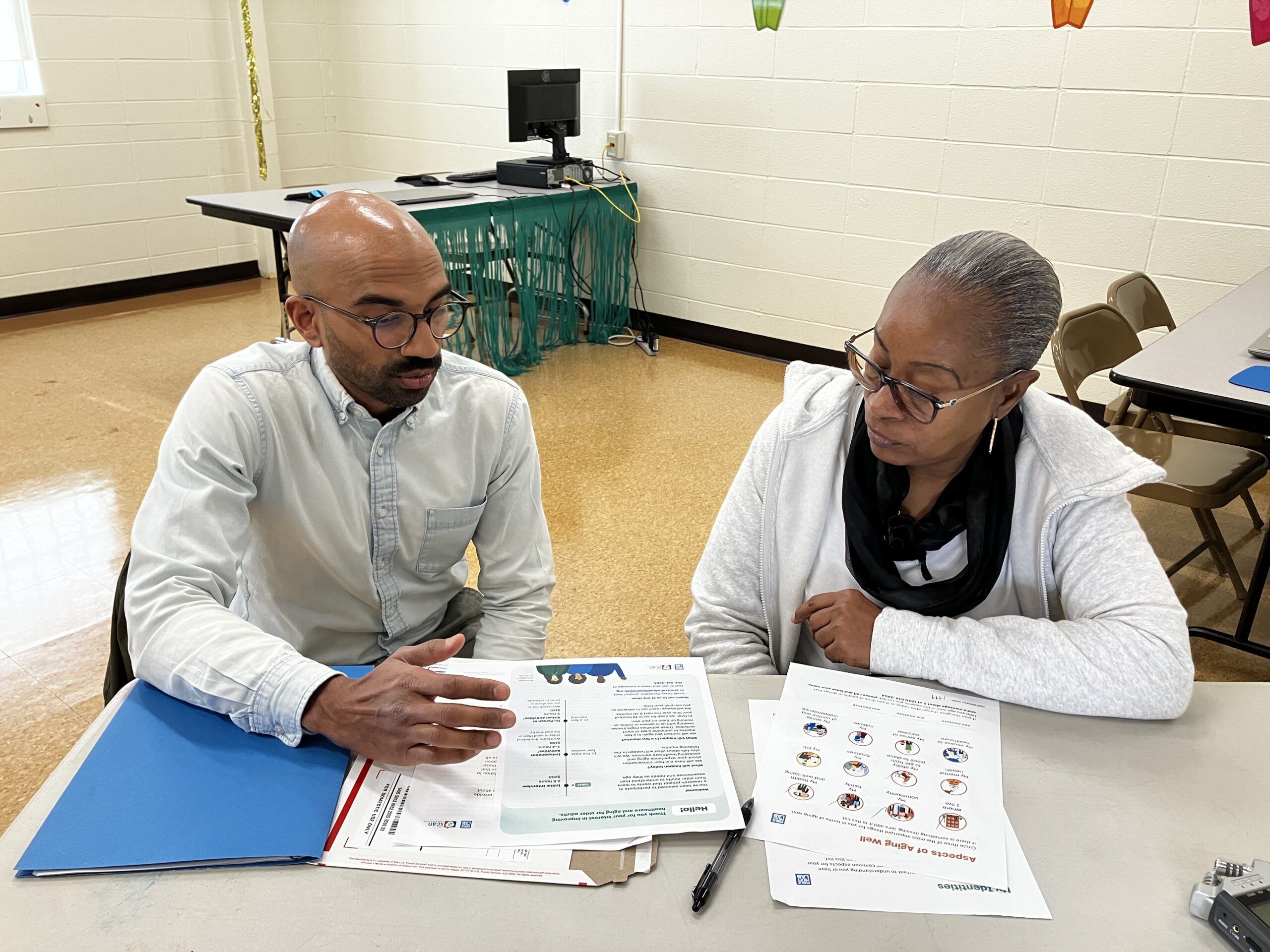

Since 2019, The SCAN Foundation (TSF) has funded critical bodies of work to advance understanding of nonmedical Medicare Advantage (MA) benefits to support health-related social needs (HRSNs). This includes a resource center that has become the go-to source for information nationwide, providing easy access to data and insights on benefits, implementation ‘roadmaps,’ and policy recommendations.
Several years into implementation, critical data gaps existed on whether and how nonmedical benefits reach and/or provide value to consumers. PPL helped close these gaps by conducting human-centered design research with older Americans about their experiences receiving Medicare Advantage nonmedical benefits.
This project presented our first opportunity to leverage the research participant pool of older Americans we had previously generated in the development of The People Say, the public, qualitative research database created in partnership with The SCAN Foundation. Conducting follow-on interviews with members of that participant pool and adding new participants to the pool, we worked to build an evidence base on the value of nonmedical benefits, focusing particularly on TSF’s priority populations of BIPOC, rural, and low-income older adults. Leveraging The People Say in this way begins to fulfill PPL and TSF’s larger goal of developing longitudinal research with older adults nationwide. And the findings we generated with this work support a more balanced review and discourse on benefits extending beyond traditional healthcare coverage among policymakers, industry experts, and consumer advocates.
The SCAN Foundation and ATI Advisory are using our findings, alongside additional research, to inform advocacy for new Medicare coverage and care delivery reforms aligned with the needs and preferences of TSF’s priority populations.
In addition to delivering our findings to ATI and TSF, we also incorporated them into The People Say, adding data from this second, more focused interview to the existing data sets of multiple research participants. This research was also featured in an article from Health Affairs, Elevating Beneficiary Perspectives On The Promise And Pitfalls of Medicare Advantage Supplemental Benefits.

Data Points
Beneficiary Interviews
Tagged Topics
We conducted ten qualitative interviews with Medicare Advantage (MA) enrollees receiving non-medical supplemental benefits in Pennsylvania, Texas, and Alabama. Five of these research participants were re-recruited from the People Say participant pool, and five additional participants were selected for their geographic proximity to the first five and their enrollment in MA plans offering them non-medical supplemental benefits.
We focused on four primary inquiry areas:
Themes
While we did not undertake synthesis for the data we collected, we did observe some themes in reviewing the data.
Awareness and Information Needs
Challenges and Desired Changes
Value
We incorporated the filmed data from beneficiary interviews into The People Say, tagged to “Study 2: Aug 2024 – Sept 2024,” alongside a variety of other topics and subtopics. We also developed a set of themes from research and produced key findings and participant profiles for each beneficiary participant.
Alongside PPL’s research, TSF and ATI conducted interviews with former and current state officials, information aggregators (e.g., State Health Insurance Assistance Program counselors, health plan brokers), home and community-based service (HCBS) providers, and caregivers to gain a deeper understanding of Medicare benefits most likely to enable consumers to continue to live in both their home and community.
With the findings of these various interviews, TSF and ATI are supporting ongoing coverage and dialogue among policymakers, industry experts, and consumer advocates to inform new Medicare coverage and care delivery reforms that reflect the needs and preferences of TSF’s priority populations.
PPL is a tax-exempt 501(c)(3)
nonprofit organization.
info@publicpolicylab.org
+1 646 535 6535
20 Jay Street, Suite 203
Brooklyn, NY 11201
We'd love to hear more. Send us a note and we'll be in touch.
We're currently seeking applications for a Graduate Summer Intern. If interested, learn more about the role here.
To hear about future job announcements, follow us on Instagram, Twitter, Threads, and LinkedIn or subscribe to our newsletter.
Enter your email below to subscribe to our occasional newsletter.
Wondering what you’ve missed?
Check out our
The Public Policy Lab is a tax-exempt
501(c)(3) nonprofit organization.
Donate now to support our work; your
gift is tax-deductible as allowed by law.